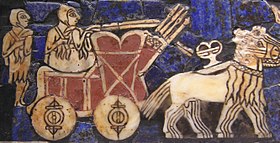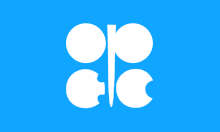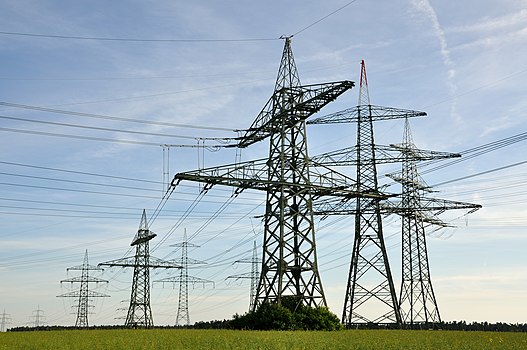Portal:Technology

Technology is the application of conceptual knowledge to achieve practical goals, especially in a reproducible way. The word technology can also mean the products resulting from such efforts, including both tangible tools such as utensils or machines, and intangible ones such as software. Technology plays a critical role in science, engineering, and everyday life.
Technological advancements have led to significant changes in society. The earliest known technology is the stone tool, used during prehistoric times, followed by the control of fire, which contributed to the growth of the human brain and the development of language during the Ice Age. The invention of the wheel in the Bronze Age allowed greater travel and the creation of more complex machines. More recent technological inventions, including the printing press, telephone, and the Internet, have lowered barriers to communication and ushered in the knowledge economy. (Full article...)
Recognized articles -

The Organization of the Petroleum Exporting Countries (OPEC, /ˈoʊpɛk/ OH-pek) is an organization enabling the co-operation of leading oil-producing and oil-dependent countries in order to collectively influence the global oil market and maximize profit. It was founded on 14 September 1960 in Baghdad by the first five members (Iran, Iraq, Kuwait, Saudi Arabia, and Venezuela). The organization, which currently comprises 12 member countries, accounted for an estimated 30 percent of global oil production. A 2022 report further details that OPEC member countries were responsible for approximately 38 percent of it. Additionally, it is estimated that 79.5 percent of the world's proven oil reserves are located within OPEC nations, with the Middle East alone accounting for 67.2 percent of OPEC's total reserves.
In a series of steps in the 1960s and 1970s, OPEC restructured the global system of oil production in favor of oil-producing states and away from an oligopoly of dominant Anglo-American oil firms (the "Seven Sisters"). In the 1970s, restrictions in oil production led to a dramatic rise in oil prices with long-lasting and far-reaching consequences for the global economy. Since the 1980s, OPEC has had a limited impact on world oil-supply and oil-price stability, as there is frequent cheating by members on their commitments to one another, and as member commitments reflect what they would do even in the absence of OPEC. However, since 2020, OPEC countries along with non-OPEC participants had helped in stabilising oil markets after the COVID-19 pandemic resulted in a collapse in oil demand. This has allowed oil markets to remain stable relative to other energy markets that experienced unprecedented volatility. (Full article...)
Little Boy is the name of the type of atomic bomb used in the bombing of the Japanese city of Hiroshima on 6 August 1945 during World War II, making it the first nuclear weapon used in warfare. The bomb was dropped from the Boeing B-29 Superfortress Enola Gay piloted by Colonel Paul W. Tibbets Jr., commander of the 509th Composite Group, and Captain Robert A. Lewis. It exploded with an energy of approximately 15 kilotons of TNT (63 TJ) and had an explosion radius of approximately 1.3 kilometers which caused widespread death across the city. The Hiroshima bombing was the second nuclear explosion in history, after the Trinity nuclear test.
Little Boy was developed by Lieutenant Commander Francis Birch's group at the Manhattan Project's Los Alamos Laboratory during World War II, a reworking of their abandoned Thin Man nuclear bomb. Like Thin Man, it was a gun-type fission weapon. It derived its explosive power from the nuclear fission of uranium-235, whereas Thin Man was based on fission of plutonium-239. Fission was accomplished by shooting a hollow cylinder (the "bullet") onto a solid cylinder of the same material (the "target") by means of a charge of nitrocellulose propellant powder. Little Boy contained 64 kilograms (141 lb) of highly enriched uranium, although less than a kilogram underwent nuclear fission. Its components were fabricated at three different plants so that no one would have a copy of the complete design. Unlike the implosion design, which required sophisticated coordination of shaped explosive charges, the gun-type design was considered almost certain to work so it was never tested before its first use at Hiroshima. (Full article...)
Selected picture
Main topics
General images -
Did you know (auto-generated) -

- ... that Justin Yu, the current Classic Tetris World Champion, is also a cellist in MIT's video game orchestra?
- ... that Criccieth Castle combined the "latest advances in military technology" with the "haphazard Welsh castle building style"?
- ... that Suresh Jadhav led the development of the COVID-19 vaccine marketed as Covishield?
- ... that Kathanar – The Wild Sorcerer is being shot on a custom-built studio spanning 45,000 square feet (4,200 m), utilizing the virtual production technology?
- ... that Guy Parmelin, now President of Switzerland, opened the study program of cyber security of the Lucerne School of Information Technology in 2018?
- ... that OPTi Inc. won a patent suit against Apple for unauthorized use of "predictive snooping" technology?
- ... that it was Caltech experimental physicist Rana X. Adhikari's idea to build a gravitational-wave observatory in India?
- ... that several science fiction critics praised "Rock Diver", the first short story by American writer Harry Harrison, for its compelling take on technology for passing through matter?
Top 10 WikiProject Technology popular articles of the month
Elon Reeve Musk FRS (/ˈiːlɒn/; born June 28, 1971) is a businessman and investor known for his key roles in the space company SpaceX and the automotive company Tesla, Inc. Other involvements include ownership of X Corp., the company that operates the social media platform X (formerly known as Twitter), and his role in the founding of The Boring Company, xAI, Neuralink, and OpenAI. He is one of the wealthiest individuals in the world; as of August 2024 Forbes estimates his net worth to be US$247 billion. (Full article...)

WhatsApp (officially WhatsApp Messenger) is an instant messaging (IM) and voice-over-IP (VoIP) service owned by technology conglomerate Meta. It allows users to send text, voice messages and video messages, make voice and video calls, and share images, documents, user locations, and other content. WhatsApp's client application runs on mobile devices, and can be accessed from computers. The service requires a cellular mobile telephone number to sign up. In January 2018, WhatsApp released a standalone business app called WhatsApp Business which can communicate with the standard WhatsApp client. (Full article...)
Google LLC (/ˈɡuːɡəl/ GOO-ghəl) is an American multinational corporation and technology company focusing on online advertising, search engine technology, cloud computing, computer software, quantum computing, e-commerce, consumer electronics, and artificial intelligence (AI). It has been referred to as "the most powerful company in the world" and is one of the world's most valuable brands due to its market dominance, data collection, and technological advantages in the field of AI. Google's parent company, Alphabet Inc., is one of the five Big Tech companies, alongside Amazon, Apple, Meta, and Microsoft. (Full article...)
Amazon.com, Inc., doing business as Amazon (/ˈæməzɒn/, AM-ə-zon; UK also /ˈæməzən/, AM-ə-zən), is an American multinational technology company, engaged in e-commerce, cloud computing, online advertising, digital streaming, and artificial intelligence. It is considered one of the Big Five American technology companies; the other four being Alphabet (parent company of Google), Apple, Meta (parent company of Facebook), and Microsoft. (Full article...)
Netflix is an American subscription video on-demand over-the-top streaming service. The service primarily distributes original and acquired films and television shows from various genres, and it is available internationally in multiple languages. (Full article...)





















































































